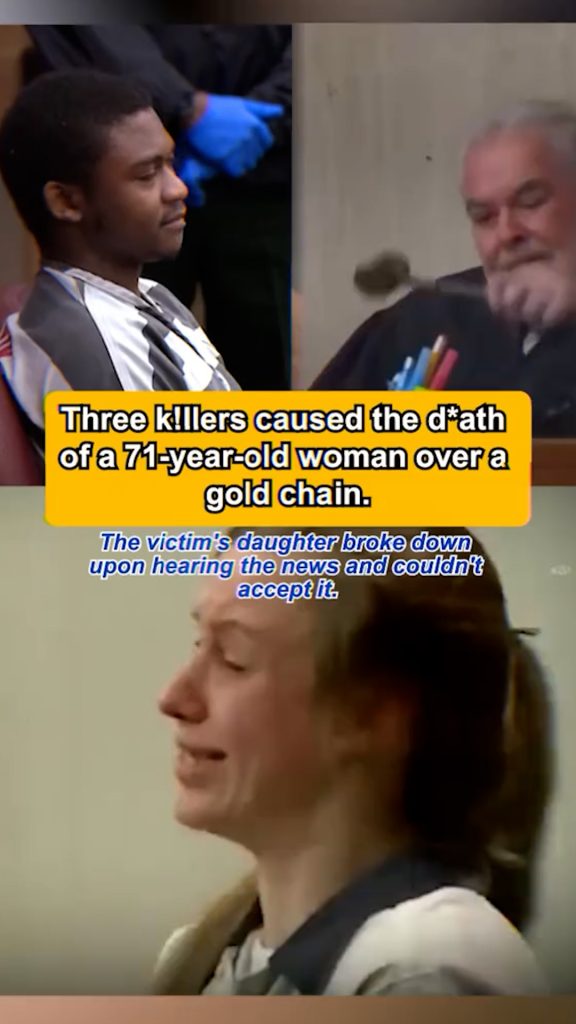
A Kern County courtroom exploded in grief and fury today as family members of Wada Lubiramos, 71, reacted to the hearing for three suspects accused in the robbery that left her dead.
Prosecutors say the attack happened in a Food 4 Less parking lot in Hanford. Surveillance video reportedly shows Christopher Patterson yanking a gold chain from Lubiramos’s neck; she fell, struck the pavement, and suffered a fatal heart attack. The DA says the other two suspects are Maximilian McDonald and Lawrence Slater — and that all three are tied to local gangs and will be tried together by Kern County’s gang unit.
The emotional low point came when Lubiramos’s daughter, Angelica Oramos, sobbed in court and demanded the harshest punishment. “My mom didn’t deserve to die over some damn gold chain,” she shouted. According to reports, Patterson even smirked and laughed during the hearing — a moment that pushed family members and onlookers to call for the death penalty.
Adding to the anger: Slater was reportedly wearing a court-ordered GPS monitor at the time of the robbery, and officials say tracking data places all three suspects at the scene. The three are due back in court on September 19.
Why this has people furious
- The victim was elderly and allegedly killed in what prosecutors describe as a senseless robbery.
- One suspect was reportedly on parole with an ankle monitor — raising questions about supervision and enforcement.
- Courtroom behavior (laughing/smirking) by an accused perpetrator intensified public outrage.
The bigger questions
This case has reignited heated debates many readers will recognize: Are tools like GPS monitors and parole conditions actually preventing repeat violent crime — or are they just superficial measures? When suspects repeatedly commit violence, should the justice system shift focus to tougher penalties or to better supervision and prevention?
What families want
For Angelica and others who watched the video of her mother’s final moments, the answer is simple: accountability and the maximum sentence the law allows. For many members of the public, the image of a 71-year-old woman dying over a chain is a call for change — whether that means stricter parole enforcement, tougher sentencing, or improved interventions targeted at gang violence.
The defendants will return to court in September. Until then, the community is left asking whether current systems are doing enough to protect vulnerable people — and whether justice will finally match the severity of the harm.




